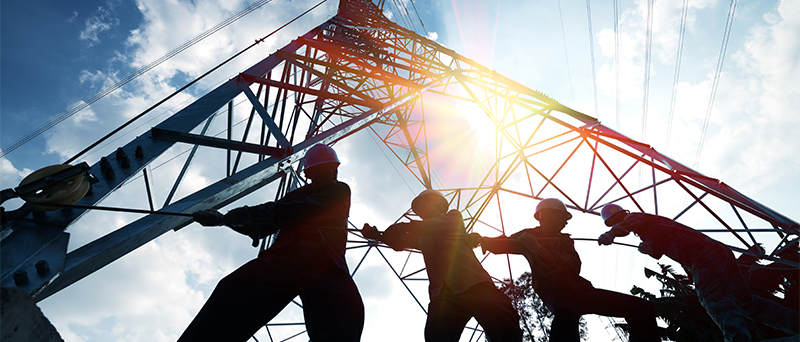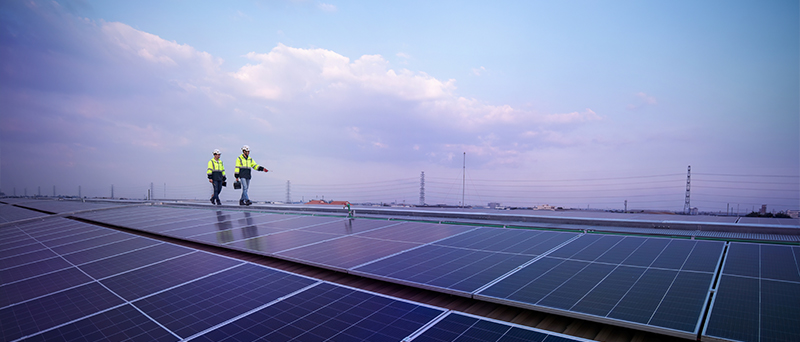Read the latest thoughts and analysis on breakthrough solutions driving impact for a sustainable future
The Grid Needs a Glow Up

In late April 2025, the Iberian Peninsula went dark.
Lights in homes went out, businesses froze as electronic payments failed, trains stalled mid-journey leaving passengers stranded, and traffic lights flickered off causing confusion on roads. About 12 hours later, the power returned and with it the scramble to understand what went wrong. As investigators comb through energy data, it’s becoming clear that the problem wasn’t a lack of power supply, but about the grid.
Energy takes center stage in discussions about sustainability, but the need to upgrade the grid – the very backbone of our energy systems – is often overlooked. As the Iberian blackout shows, it’s a blind spot which, left unaddressed, will literally leave us in the dark.
You Can’t Teach an Old Grid New Tricks
Taken as a whole, the grid is humanity’s largest piece of infrastructure. Upgrading or changing grid infrastructure, even in parts, is an ambitious and expensive undertaking. The International Energy Agency estimates that to meet national climate targets, global investment in the grid needs to almost double by 2030, to USD 600 billion.
But the price we’ll pay for an outdated grid is even higher. The traditional model of the electricity grid was designed over a century ago, and around the world, the older elements are showing their age.
Physically, decades-old infrastructure has the wear and tear to prove it, alongside the drawbacks incumbent in old machinery: higher maintenance costs and less resilience to harsh conditions.
In some cases, the limitations of the legacy grid’s design make it increasingly unfit for a changing energy landscape. It was created to facilitate unidirectional flow, carrying energy from a source to the consumer. If there’s a failure, fault, or change in pattern, there’s no mechanism to flag it. In these cases, it’s up to the consumer to notice, whether in a dim light or an unusual bill, and call up the provider to let them know. It is bedeviled by large fluctuations, without the technology to adjust supply in response to changes in demand.
Finally, and critically, as renewable energy sources rise in popularity and use, the grid is straining to integrate them. And this is just the beginning. Global electricity consumption needs to increase by 20% to meet energy targets, to feed electrolyzers, electric vehicles and new electric heating and cooling systems.
With such a long list to contend with, what can we change to build a bigger, better grid?

The New Grid on the Block
The future of energy grids must be radically different from today’s. They need to be smarter, more flexible, and decentralized, powered by a mix of clean baseload sources, diverse sources of renewable energy, and expanded, upgraded infrastructure.
On a fundamental level, the traditional model of a one-way flow of power, from centralized plants to consumers, is overdue for retirement. Its successor should be smart grids, systems that can use real-time data from the grid edge – homes, appliances, electric vehicles, and more – to optimize electricity flow. Smart meters, sensors, and connected devices can help consumers and providers alike gather granular insights into consumption patterns. With greater visibility, utility companies will be able to anticipate demand surges, detect faults instantly, and automate responses to fluctuating supply. And today, with artificial intelligence on hand to analyze this vast amount of data, we have the tools to make the smartest, strongest energy system, at the cheapest price for users.
As wind and solar continue their dramatic upward trajectory and become mainstays of our energy system, providers must accept their inherent variability. They must weave in a steadier supply source to supplement solar and wind, so that even when the sun isn’t shining and the wind isn’t blowing, we have an uninterrupted flow of energy. Storage solutions such as battery energy storage systems (BESS) and other forms of energy like hydropower and next-generation nuclear energy will prove critical to solve the puzzle of intermittency.
Moreover, as we add energy sources, we need to change infrastructure to match. Wind and solar farms are often located in remote or offshore locations, such as deserts or coastal waters, far from urban demand centers. High-voltage transmission lines will be needed to bring this power across long distances to central substations. From there, regional networks will convert the electricity to lower voltages for localized distribution.

This will require replacing and upgrading a large portion of today’s ageing grids. In the U.S. alone, some transmission lines date back to the 1960s and 70s and are nearing the end of their operational life. Upgrades are needed not only to replace deteriorating components but also to enable two-way and variable power flows. Substations and transformers must be overhauled to accommodate energy coming from both centralized plants and distributed sources like rooftop solar.
Tomorrow’s electricity grids hold incredible promise, unlocking an energy system where suppliers and consumers are active participants in a dynamic electrical ecosystem. But achieving this promise calls for action and intention: coordinated investments in infrastructure, policy support for modernization, and a clear focus on innovation. By making these changes now, we can build an energy system ready for both the challenges and opportunities of a low-carbon future.
More Articles
27 NOVEMBER 2025
Energy Transformation
From pledge to policy: how the UAE is turning climate ambition into action
26 NOVEMBER 2025
Decarbonization


